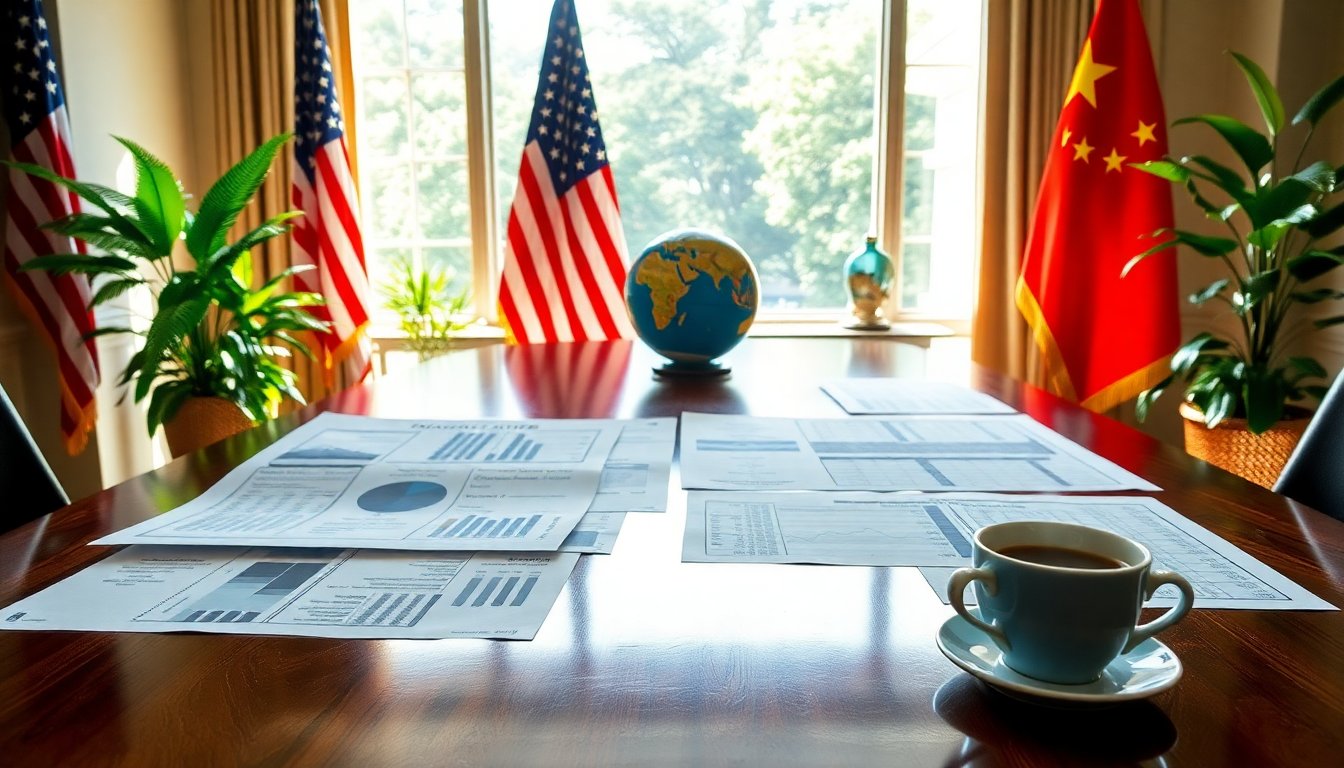Table of Contents
The atmosphere surrounding US-China trade relations has become notably optimistic following recent discussions held in Malaysia. Both nations have reported substantial advancements in negotiations, raising hopes that President Donald Trump and President Xi Jinping might soon agree on terms to mitigate their ongoing trade conflict.
This upcoming meeting will mark their first direct conversation since 2019, a significant moment that could shape the future of global trade.
Progress in trade negotiations
During discussions at the ASEAN summit in Kuala Lumpur, officials from the United States and China reported notable advancements.
Scott Bessent, U.S. Secretary of the Treasury, addressed the media, stating that the two nations have developed a preliminary framework to guide upcoming negotiations in South Korea.
Bessent indicated that an agreement may be reached to delay China’s proposed export restrictions on rare earth elements and prevent the implementation of a 100% tariff on Chinese imports, a measure previously threatened by former President Trump.
Key components of the negotiation framework
In addition to tariff-related issues, Bessent emphasized Beijing’s commitment to significant purchases of US agricultural products. This move could greatly benefit American farmers, especially those cultivating soybeans. Meanwhile, He Lifeng, China’s chief trade negotiator, stated that both parties have reached a basic consensus to address their primary concerns.
This spirit of collaboration has fostered optimism in Asian stock markets. Notably, indices in Japan and South Korea have seen substantial gains. The Nikkei 225 index rose by approximately 2.1%, while South Korea’s KOSPI increased by about 2.3%.
These movements reflect growing investor confidence in the easing of US-China tensions.
Implications for global markets
Stock futures in the United States surged following news of a potential trade deal. This indicates a favorable market reaction to improving trade relations.
The Dow futures increased by 242 points, reflecting investor optimism about a possible resolution.
Additionally, the Nasdaq 100 futures reached a new 52-week high, rising by 0.84%. This demonstrates a strong market response to the recent developments. As the United States prepares to adjust its trade policy, businesses and investors are closely monitoring these negotiations, recognizing their potential impact on the global economy.
Concerns over export controls and tariffs
Negotiations are progressing, but challenges loom large. Recently, China implemented new regulations mandating that all companies obtain licenses to export specific rare-earth materials. This decision raises tensions and could disrupt global supply chains if restrictions take effect.
In response, the Trump administration has threatened to impose significant tariffs on Chinese goods, escalating the conflict between these two economic giants. Analysts interpret these actions as strategic moves aimed at securing an advantage before the forthcoming meeting.
Looking ahead: the Trump-Xi meeting
As Donald Trump embarks on his diplomatic tour of Asia, he will visit Japan and South Korea before meeting with Chinese President Xi Jinping. This highly anticipated meeting aims to finalize the framework established in Malaysia, potentially serving as a pivotal moment in US-China relations.
The stakes are significant for both nations. Each seeks to stabilize its economy and prevent a full-scale trade war that could inflict severe damage worldwide. As the meeting draws nearer, global observers are keenly focused on any indications of a breakthrough that might redefine the dynamics of international trade.





